
The new Trek/Fox DRCV Shock
There was a lot of info related to the new shock co-developed by Trek and Fox (and produced by Fox) and I thought the best way to get it sorted clearly was to talk directly to the man who initiated the project – Trek’s Jose Gonzales.
nsmb – What initiated the DRCV project? Who came up with the ideas for the two stage can and the unique mount?
Jose Gonzales – The DRCV project was initiated because I was not satisfied with the performance of either a small volume (std can) or large volume (XV can) air spring – both of them had compromises which were holding back Full Floater suspension performance. This all came to light during the development of Full Floater, ABP, etc. I was confident that there were significant performance gains to be had by blending the positive attributes of both – the liveliness, control and efficiency of a small volume air spring and the mid-stroke “push through” and more linear finish rate of a large volume air spring. But it was key to control when the large volume came into play. I wanted to make sure we got rid of the “hammock” effect that large volume shocks are notorious for, and which makes a shock feel “dead” due to the super flat spring rate. I felt that there was too much focus on dampers and not enough emphasis being put on air spring manipulation.
The DRCV shock at work.
I conceived the DRCV concept of having two separate air spring chambers with a dividing member. This dividing member would also serve as the housing for a valve that would control when the second chamber would activate, which would be based on where the shock was in its travel. I also conceived the sides mount design so we could open up the center core of the shock. This allowed for an in-line two chamber design and opened up the shock’s core for air volume and the placement of the position sensitive valve. Additionally, I was also after being able to independently tune the primary spring volume from the secondary spring volume and from when the valve would activate. In other words, I wanted to decouple all 3 for maximum tuning of each one without compromising something else. The other thing I was after is the elimination of the bushing style mounting system on the rocker link mount (which is very dynamic), replacing it with bearings. This would reduce bushing drag and improve small bump and high frequency terrain response.
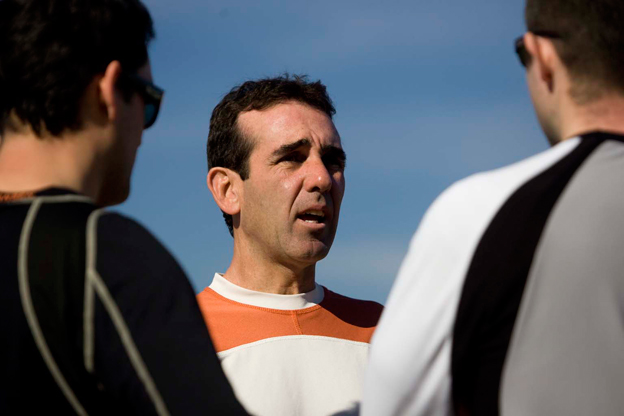
Jose Gonzales – head of Trek’s  California Advanced Concept Group Suspension Facility. Jose isn’t Canadian – but some folks call him Joser anyway.
California Advanced Concept Group Suspension Facility. Jose isn’t Canadian – but some folks call him Joser anyway.
nsmb – It’s a unique partnership between Trek and Fox. Can you tell me how that worked?
Jose Gonzales – We took the general design and concept to Fox and explained what we were after and why. We worked very closely together on the project and they contributed significantly to making it a real product. During the prototype testing phase, we realized that set-up was going to be complicated for the end user if we didn’t come up with a different system to control the two chamber function. That’s when Dennis Wooten at Fox had an enlightening moment and he conceived the plunger valve to control transfer and the dual Schrader valve filling feature. From there, it was a bunch of field testing time to fine tune the performance characteristics for each application.
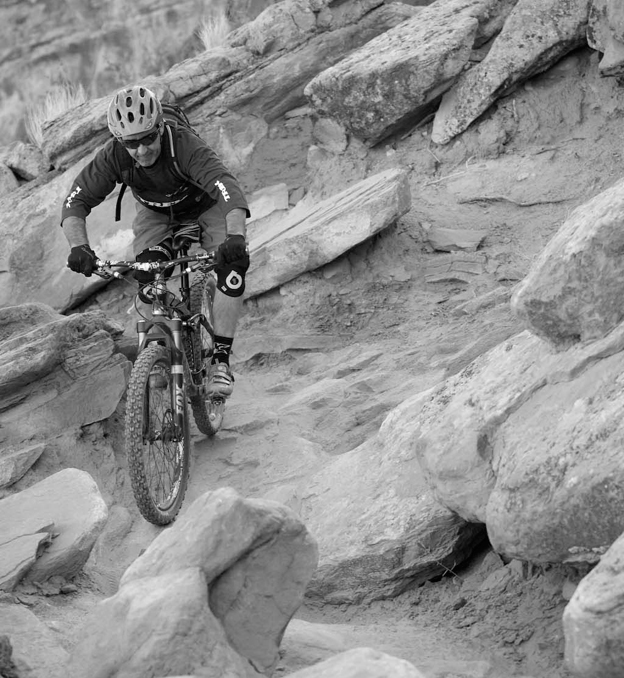
Enjoying the Scratch in Moab.
nsmb – Which technology belongs to Trek and which belongs to Fox?
Jose – Trek owns the general DRCV design and we have filed patent applications to protect it. The two in-line air chambers that are divided by a dividing member belong to Trek. This dividing member may and may not have a valve to control activation of the second chamber and to manipulate flow rate. Additionally, the dividing member serves as one of the shock’s mounting points. The Trek design also calls out that the valve is tuned to activate at a pre-determined point and that it can manipulate flow rate. It also calls out that we can decouple the tuning of the different chambers, valve activation, etc.
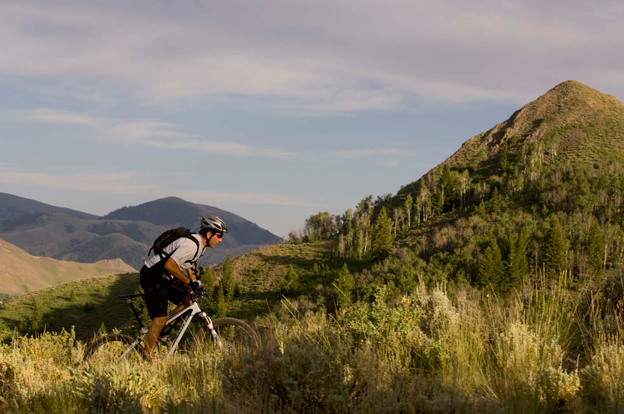
Jose doing his research.
Fox rightly owns the plunger valve design and the dual Schrader valve filling design. Because both of these features were conceived by Fox due to DRCV, we have an agreement in place that Fox will not use these designs in any other application if Trek does not abandon the use of DRCV…which isn’t going to happen.
nsmb – Can other bike companies access this technology? Do you plan to license it?
Jose – As I state in the preceding response…No and no.
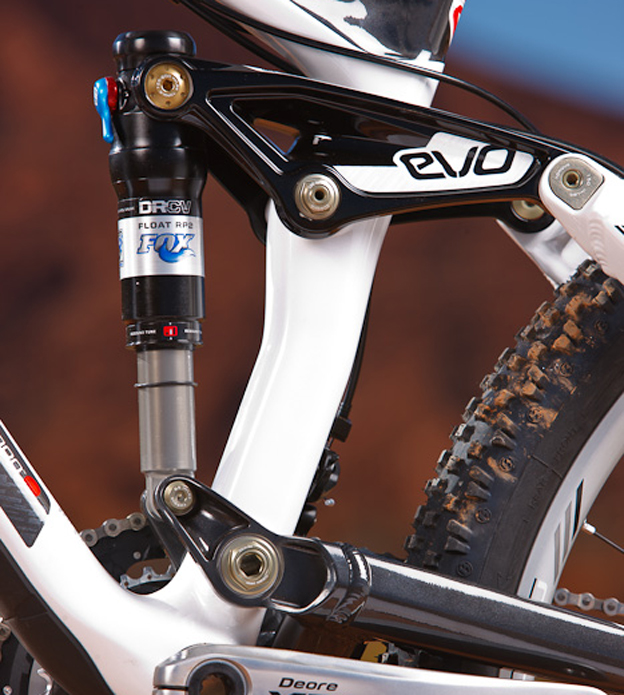
The DRCV shock mounted to a Trek Remedy 9.8. Photo ~ Stikman
nsmb -What riders will benefit most from DRCV?
Jose – Really, all riders do because it just makes for a much better air spring system. But the longer the travel the more beneficial because air volume inherently grows with increased shock travel. The more travel…the more volume…which leads to a flat spring rate…which…well it’s all covered at the start of this discussion.
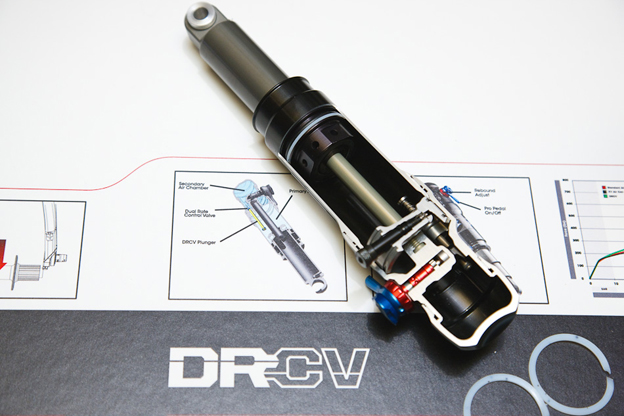
A cutaway of a DRCV shock. Photo ~ Stikman
nsmb – Will DRCV be useful on the way UP on rough terrain?
Jose – Absolutely! Its holds the rider up better when the weight transfer is to the rear, but at the same time maintains its liveliness and its ability to respond to the terrain. One frequent comment that we heard when people ride the 2010 Remedy with DRCV is that they can’t believe how well it climbs, especially without using ProPedal. The other big bonus, and why we timed the introduction of DRCV on Trek bikes as we did, is that DRCV and Boost Valve damping completely complement each other. The performance attributes of the two technologies go hand in hand to give an amazing rear suspension feel and unparalleled performance characteristics…well beyond what a standard air spring shock using Boost Valve can offer.
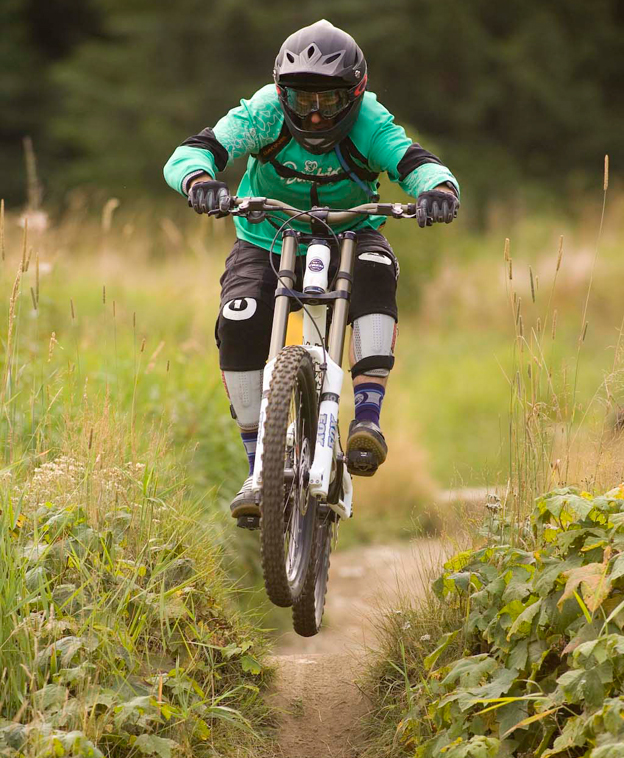
Getting on a big bike is part of the job description.
nsmb – Can you see this technology making its way onto a Session 88 for example? Maybe a 2011 Scratch?
Jose – Sorry, you’re breaking up…I can’t hear what you’re saying…
Any questions about the DRCV and how it might apply to your riding? Fire them over…







Comments
Please log in to leave a comment.